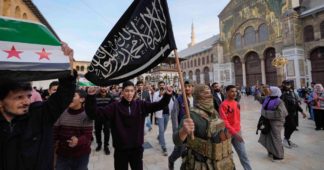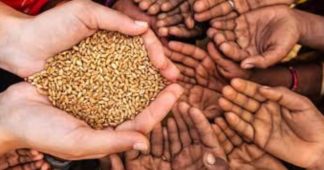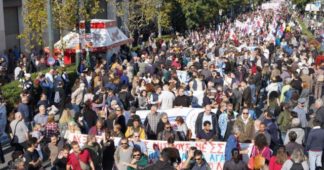Habib Lassoued (*)
Feb 12, 2025
At a time when official figures suggest that Libya is doubling its oil revenues, shocking statistics and figures are emerging about the rising poverty rate and the number of poor people in the country, raising questions about the fate of oil money and how it is spent in light of rivalry between two authorities, one based in the west and the other in the east.
Abdul Hamid al-Fadhil, a professor of economics at Misrata University, revealed that poverty in Libya now affects 32.5 percent of the population.
A study in the Journal of Economics and Business Studies, issued by the Faculty of Economics at Misrata University, stated that the percentage of Libyan families below the poverty line reached 32.5 percent, of which 1.9 percent are below the extreme poverty line.
Fadhil said, “At the urban level, Tripoli recorded the largest percentage of families below the poverty line, at 11.3 percent, while families headed by individuals in the 45-55 age group are the poorest, at 12.6 percent, compared to other age groups.”
This came days after the Tripoli Security Directorate announced the arrest of 878 beggars in the capital Tripoli during the past year, including 461 women and 221 children. While 329 of those arrested were Libyan, including 61 children, the majority of those detained was foreigners, among them 283 women and 106 children.
Observers believe that the fact that a significant group of Libyans has turned to begging indicates the stark reality of the critical economic situation the country is experiencing, the social repercussions of which cannot be ignored, especially among children.
Observers point out that Libyans have always denied the existence of its own beggar citizens. The assumption is that any beggar who appears on the streets of cities, especially Tripoli and Benghazi, comes from a neighbouring countries. However, the situation is now different, because poverty has pushed locals to begging or take up menial work that was once despised.
Observers believe that a third of the Libyans is deprived of their country’s wealth, while oil and gas revenues go to corruption networks linked to political decision-making centres, warlords, militia leaders who control smuggling routes, monopolies, speculation and major deals.
The National Institution for Human Rights in Libya has said it is unhappy with the Libyan citizens resorting to begging in the streets and public areas. It blames it on deteriorating economic, social and living conditions for a large segments of Libyan society, as a result of inflation, rising prices, the collapse of the value of the Libyan dinar and the weakness of purchasing power.
The institution said that the economic crisis affected the poorest and most needy groups; namely the displaced, the sick, those with limited income, the unemployed and those with retirement pensions and basic solidarity pensions.
The Minister of Economy in the Government of National Unity Mohammed al-Huwaij, has officially acknowledged that about 40 percent of Libyans are below the poverty line. The World Bank also announced that poverty rates in Libya have risen, especially in the eastern region, and attributed this to high inflation, the collapse of the local currency, the rise in the prices of basic commodities and food, in addition to the rise in the cost of health services and the low level of household income.
The World Bank has found that although Libya is a country that falls within the upper segment of middle-income countries, its development indicators and institutional capabilities are not commensurate with its income level. Despite the growth in oil production, years of conflicts and divisions have led to insufficient public investments and infrastructure maintenance, in addition to a weak presence of the state in the economy, and the restriction of private sector development.
The bank revealed the results of a field study which showed that the Tazirbu area is the poorest, with a poverty rate of nearly 80 percent, followed by Derna and Jalu, with a rate of 70 percent, while seven percent of the residents of the municipalities included in the study live below the poverty line, 29 percent live on less than $3 a day, and 13 percent cannot provide for their basic daily requirements.
According to the report, 13 percent of families sell their property to cover their financial needs, and 35 percent of families have run into debt, primarily to buy food.
(*) Habib Lassoued is a Tunisian writer.
We remind our readers that publication of articles on our site does not mean that we agree with what is written. Our policy is to publish anything which we consider of interest, so as to assist our readers in forming their opinions. Sometimes we even publish articles with which we totally disagree, since we believe it is important for our readers to be informed on as wide a spectrum of views as possible.











